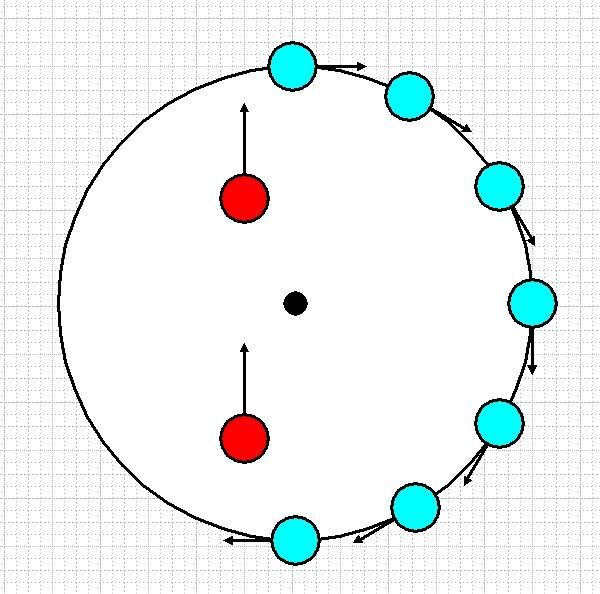This is how I see the Abeling power cycle.
The acceleration leg is obviously the right hand side of the motor where the weight move through a semicircle. The adiabatic leg is less obvious. It is the left hand side where the weights are forced in towards the centre of the wheel.

What bugged me for some time was this. The classic Carnot cycle has four legs, two isothermal and two adiabatic but the Abeling cycle seemed to only have two. I could see that if one rotated the isogravitic and the adiabatic arms as a weight travelled around as shown below

then one would only need two arms. It's as though one had a two-stroke Carnot cycle instead of the traditional four stroke cycle.
Then it struck me that problem completely disappears and we can have one to one mapping if we just have enough imagination to choose a bespoke graph paper.
The importance of the right graph paper can be seen from the huge simplification which comes from choosing logarithmic scales rather than linear scales. The cycle legs are transformed from awkward power curves into straight lines. We can carry this further by using a graph paper which is tailored specifically for the Abeling wheel. The individual increments of the cycle legs will have the same vector as the wheel circumference. We don't have to do this in practice, merely to recognise that this type of one to one mapping between graphical representation and physical device can be made.
If bespoke circular mapping graph paper were to be adopted for the traditional Carnot shown in this animation
http://galileoandeinstein.physics.virgi ... carnot.htm
then one could see that the spot traveling around the diagrammatic representation could b linked to the motion of the wheel by a single straight link.
==============================================================
ITERMISSION
==============================================================
Oh no! Oh no!
I've just seen what Count Karl, Landgrave of Hesse Cassel, saw. 8-|
Goodness gracious me. It really is that simple.
All one has to do is to bleed some of the energy off by forcing the weights towards the centre on the left hand side. This energy increases the speed of the weights spreads them out as shown in the diagram below and this gives the couple that drives the wheel.

Speeding up is equivalent to insulation as I pointed out in a previous post so there is our adiabatic leg.
You can see intuitively just looking at the diagram that it will work. Two weights going faster had a lower mass density over the length of travel than three weights going slower.
So two weights going faster is equivalent to three weights weighing less going slower.
No wonder Bessler was worried. Who wouldn't be?
I think I had better leave members to chew on this one while I go and make myself a strong cup of tea. 8-)






